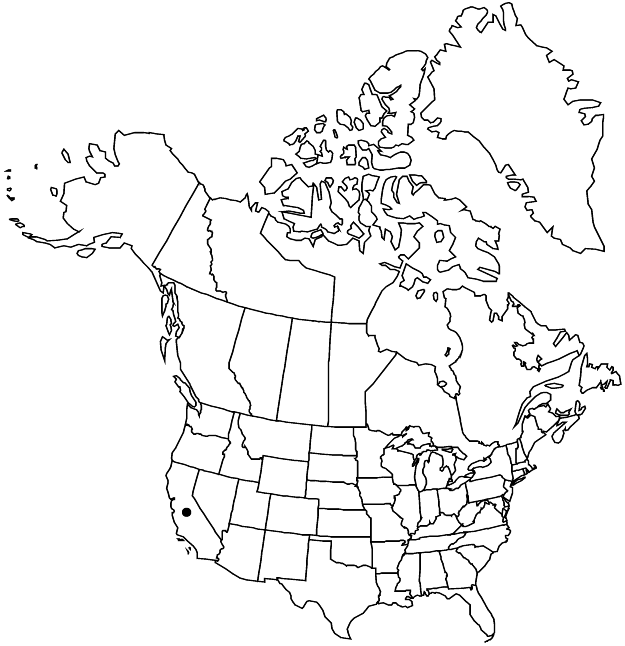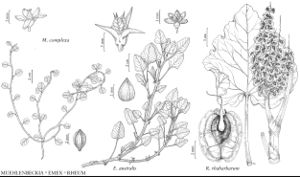Difference between revisions of "Emex australis"
Ann. Sci. Nat., Bot., sér. 2, 9: 195, plate 7. 1838.
FNA>Volume Importer |
FNA>Volume Importer |
(No difference)
| |
Revision as of 20:06, 24 September 2019
Plants 1–4(–6) dm. Stems prostrate, decumbent, or ascending, base often reddish, branched proximally. Leaves: ocrea loose, glabrous; petiole (0.5–)1–8(–15) cm, glabrous; blade subhastate to elliptic or ovate, 1–10 × 0.5–6 cm, base truncate to cuneate, apex obtuse to acute. Staminate flowers 1–8 per ocreate fascicle; tepals narrowly oblong to oblanceolate, 1.5–2 mm. Pistillate flowers 1–4 per ocreate fascicle; outer tepals ovate to oblong, 4–6 mm in fruit, inner tepals broadly triangular-ovate, 5–6 mm in fruit, apex mucronate. Fruiting perianths 7–9 × 9–10 mm, spines ascending or spreading, 5–10 mm, base tapering. Achenes 4–6 × 2–3 mm, shiny. 2n = 20.
Phenology: Flowering year-round.
Habitat: Disturbed sites, especially in sandy soils
Elevation: 0-200 m
Distribution

Calif., Africa (Republic of South Africa), introduced in West Indies (Trinidad), Europe, Asia (India, Pakistan, Taiwan), Africa (Kenya, Madagascar, Malawi, Tanzania, Zimbabwe), Pacific Islands (Hawaii), Australia.
Discussion
Selected References
None.
